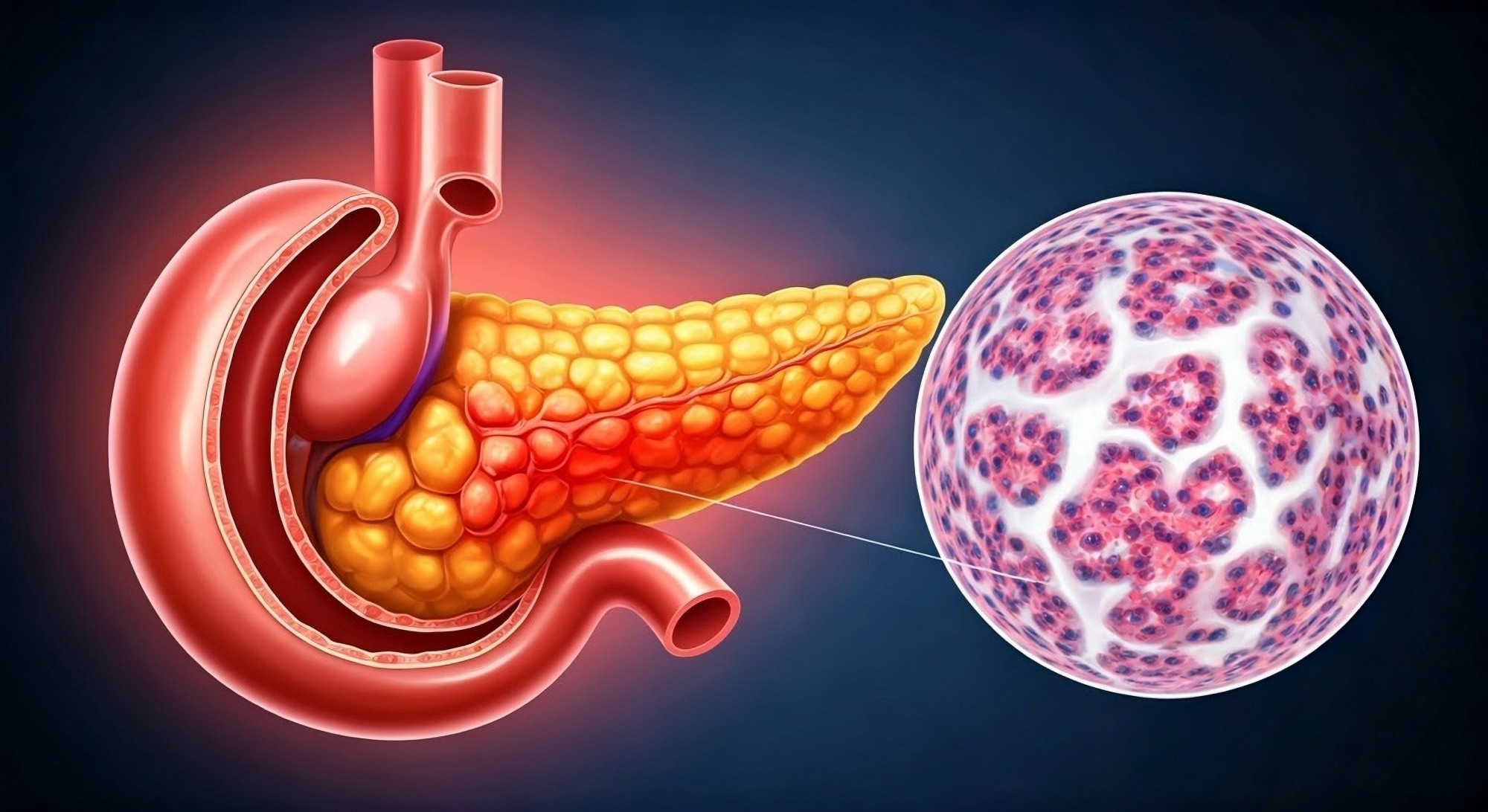New research uncovers how distinct molecular profiles and immune signatures in metastatic pancreatic cancer impact survival and guide tailored treatment strategies.
 Study: Ongoing replication stress tolerance and clonal T cell responses distinguish liver and lung recurrence and outcomes in pancreatic cancer. Image Credit: Shutterstock AI / Shutterstock.com
Study: Ongoing replication stress tolerance and clonal T cell responses distinguish liver and lung recurrence and outcomes in pancreatic cancer. Image Credit: Shutterstock AI / Shutterstock.com
A recent study published in Nature Cancer identifies distinct molecular and immune profiles that impact the prognosis of patients with metastatic pancreatic ductal adenocarcinoma (PDAC).
PDAC subtypes and metastasis
PDAC is a highly aggressive malignancy associated with a very poor prognosis, with a median survival period of nine to 12 months. Interestingly, about 10% of PDAC patients who develop lung metastasis survive longer than those with metastasis to other organs, particularly the liver. In some cases, PDAC patients with untreated lung metastases have survived for over five years.
PDAC tumoes can be further classified into several subtypes based on gene expression and the surrounding tumor microenvironment. Among these subtypes, basal-like subtype tumors are associated with poorer outcomes than classical subtype tumors.
Basal-like PDAC tumors are associated with ongoing replication stress, which is characterized by stalled replication forks caused by premature entry into the S phase, transcription-replication collisions, or aberrant DNA damage checkpoints. Although replication stress can lead to DNA damage, cell cycle arrest, interferon (IFN) signaling, and senescence or cell death, some cancer cells can evolve to tolerate this stress, thereby increasing their growth potential and resistance to certain therapeutics.
In the current study, scientists generate and analyze genomic, transcriptomic, and T-cell receptor sequencing data of metastatic PDAC patients to explore molecular and immune differences between PDAC with lung or liver metastasis. A primary focus of the study was the development and analysis of the primary organotropism gene set (pORG), which identifies molecular signatures distinguishing liver-metastatic from lung-metastatic primary tumors.
Survival and tumor subtype
PDAC patients with lung metastases had significantly higher survival rates of 819 days as compared to 450 days among those with lung metastases, with this survival advantage independent of tumor subtype. PDAC patients with lung metastases also experienced longer recurrence-free intervals after surgical resection. Furthermore, pung metastatic patients were less likely to have basal-like subtype tumors, whereas classical and basal-like tumors were frequently identified in patients with liver metastases.
The pORG gene signature
The pORG gene set comprises a total of 55 genes that were overexpressed in liver-metastatic primary tumors. As compared to pancreatic cancer subtype classifier (PurIST), which is a PDAC classification system that focuses on classical and basal-like subtypes, pORG provides important insights into tumor behavior and how it relates to the metastatic potential of PDAC tumors and, as a result, patient prognoses.
The pORG signature was found to independently predict metastatic PDAC patient outcomes. More specifically, high-pORG and liver metastatic primary tumor cells can develop tolerance to ongoing replication stress by increasing cell cycle activity and DNA damage repair processes.
Low pORG tumors, which were primarily observed in patients with lung metastases, were characterized by increased infiltration of B- and T-cells, greater diversity of T-cell receptors, and increased T-cell clonality. Taken together, the immune profiles of low pORG tumors indicate the potential of these cancer cells to induce strong anti-tumor immunity.
Comapratively, both high-pORG and liver metastatic primary tumors exhibited increased chronic IFN signaling, macrophage activity, and plasmacytoid dendritic cell levels, all of which can lead to reduced tumor immunogenicity.
Therapeutic implications
PDAC with liver metastasis is associated with tolerance to ongoing replication stress and limited tumor immunity, both of which lead to less favorable patient outcomes. Comparatively, PDAC with lung metastasis is associated with active tumor immunity that may contribute to better median overall survival (OS) rates as compared to those who develop liver metastases.
The pORG signature identified in the current study provides valuable insights into how treatments can be tailored for PDAC patients. Whereas high pORG tumors can be targeted by promoting DNA damage or interrupting DNA damage response (DDR) pathways with platinum-based therapies or poly (ADP-ribose) polymerase (PARP) inhibitors, low pORG tumors may respond better to immune therapies, such as vaccines or immune checkpoint inhibitors.
Future studies must be conducted in larger patient cohorts to validate these findings and explore potential therapeutic strategies that can exploit the vulnerability of high and low pORG tumors.
Journal reference:
- Link, J. M., Eng, J. R., Pelz, C., et al. (2025). Ongoing replication stress tolerance and clonal T cell responses distinguish liver and lung recurrence and outcomes in pancreatic cancer. Nature Cancer. doi:10.1038/s43018-024-00881-3.




